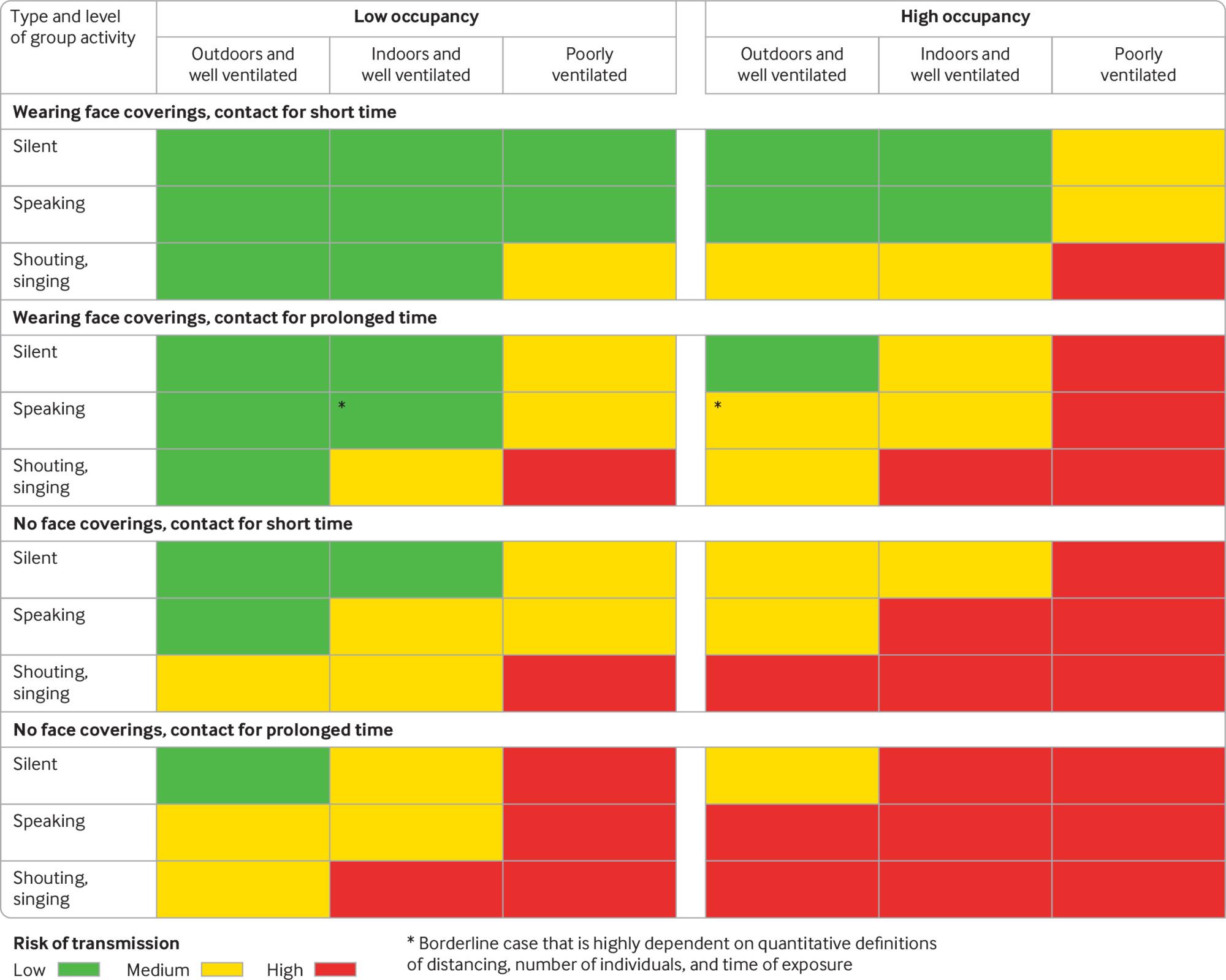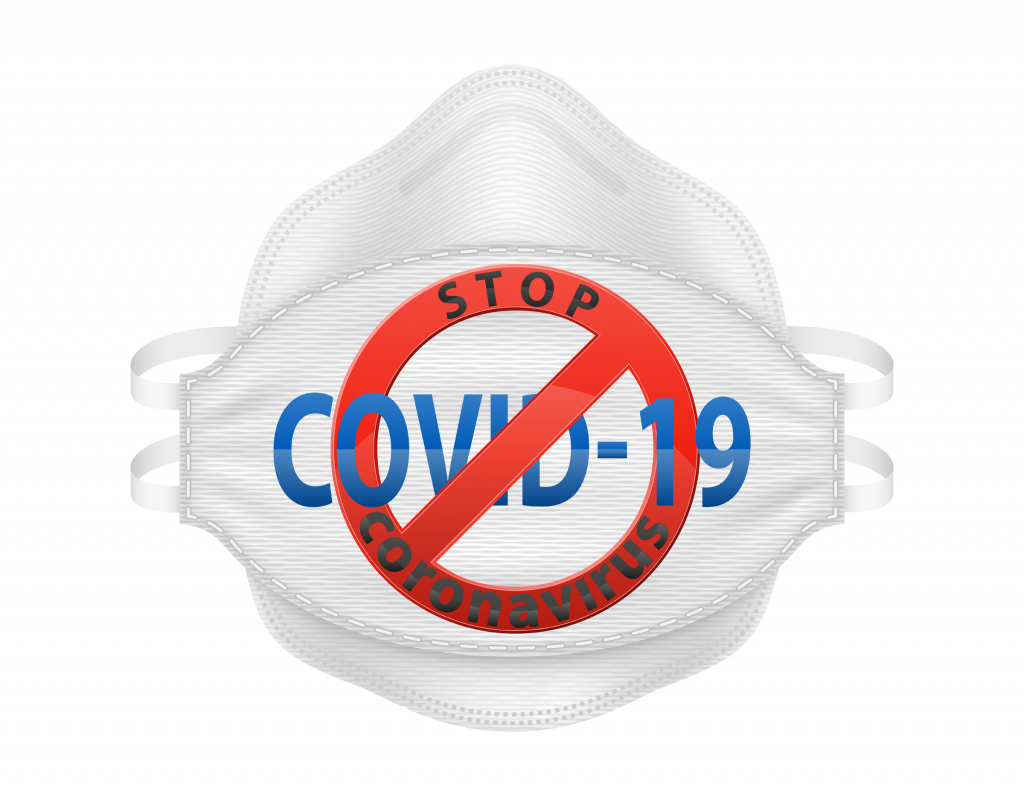Regardless of which metaphorical hat I don — husband, father, CEO, friend, relative, citizen — I find myself concerned with keeping those around me safe during the pandemic. Faced with the unprecedented nature of the pandemic, governments have often made sweeping rules (like lockdowns and wearing masks) that have generated angry responses in people who believe such actions are unnecessary or too broad. To be fair, concerned government leaders are primarily following medical and scientific guidelines which generally adhere to the philosophy that prevention is better than cure. We are now far enough into the pandemic to be a bit more discrete in how we apply rules in an attempt to keep the pandemic in check until a vaccine can be developed. Harry Kretchmer (@harrykretchmer), a senior writer at Formative Content, reports, “Current COVID-19 social distancing rules are too rigid and need to reflect real-life risks better, say Oxford and MIT researchers.”[1]
Although some people may read that conclusion and think it’s okay to hug their neighbors, they would be wrong. For example, the researchers note that current, widespread recommendation to remain six feet apart may not be far enough. Kretchmer explains, “[The six-foot guideline is] more than 100 years old and was proposed by German scientist Carl Flügge in 1897. What’s more, recent research has found that droplets from sneezes can travel up to eight meters.” Does that mean we should be standing 26 feet apart? Of course not. What the researchers are suggesting is that people take a common sense approach to social distancing and wearing masks depending on where they are and what they are doing. At the moment, we could use more common sense and consideration.
Keeping safe using common sense
The Oxford/MIT researchers prepared a “traffic light” chart to graphically demonstrate how to implement social distancing using a bit of common sense. Kretchmer explains, “The central idea behind the chart is that ‘environmental influences are complex’ and require different, appropriately calibrated responses. The chart shows that the highest risk situations (in red) are where there is ‘high occupancy’ over a prolonged period. Quiet, short, ‘low occupancy’ gatherings with just a few people outdoors are the least risky (green).”

Source: BMJ[2] (click image to enlarge)
Perhaps the most telling recommendation from the chart is that wearing a face mask is the simplest and most effective way to stay in the low risk of transmission environment. Kretchmer concludes, “Rules on distancing should ‘reflect the multiple factors that affect risk, including ventilation, occupancy, and exposure time’. As the chart shows, it isn’t really possible to create a distance that works for everyone, because every situation is different. In low-risk scenarios, the researchers say, a little less caution is likely to be safe. But when we’re in ‘red’ high-risk territory, we probably need to raise our guard.”
The importance of wearing a mask
Health professionals from the Centers for Disease Control and Prevention (CDC) note, “Masks are recommended as a simple barrier to help prevent respiratory droplets from traveling into the air and onto other people when the person wearing the mask coughs, sneezes, talks, or raises their voice. This is called source control. This recommendation is based on what we know about the role respiratory droplets play in the spread of the virus that causes COVID-19, paired with emerging evidence from clinical and laboratory studies that shows masks reduce the spray of droplets when worn over the nose and mouth.”[3] In other words, people should wear masks to protect others as well as provide protection for themselves. A poll conducted by the Brookings Institution found, “40% of Americans who do not wear a mask say this is because it is ‘their right as an American to not wear a mask.’ This modal response was followed by Americans who say they do not wear a mask ‘because it is uncomfortable’ at 24%.”[4] As Edward D. Vargas (@edwarddvargas), an Assistant Professor at Arizona State University, and Gabriel R. Sanchez, a Nonresident Senior Fellow in Governance Studies at the Brookings Institution, bluntly state, “The data reveals that a combined 64% of Americans believe that their right to not have to be inconvenienced by wearing a mask or scarf over their face is more important than reducing the probability of getting sick or infecting others.”[5]
Most of the medical profession believes masks will help get us back to normal more quickly and safely. “I think the biggest thing with COVID now that shapes all of this guidance on masks is that we can’t tell who’s infected,” says Peter Chin-Hong (@PCH_SF), MD, an infectious disease specialist. “You can’t look in a crowd and say, oh, that person should wear mask. There’s a lot of asymptomatic infection, so everybody has to wear a mask.”[6] Another medical doctor, epidemiologist George Rutherford, looks at the other side of the coin. He says, “It would be unethical to assign people to not wear a mask during a pandemic.”[7] That would really be messing with peoples’ rights. Rajeev Venkayya (@rvenkayya), President of the Global Vaccine Business Unit at Takeda Pharmaceuticals International Inc., and Gabrielle Fitzgerald (@FitzGab), Founder and CEO of Panorama, write, “The COVID-19 pandemic has reshaped life as we know it. Many of us are staying home, avoiding people on the street and changing daily habits, like going to school or work, in ways we never imagined. While we are changing old behaviors, there are new routines we need to adopt. First and foremost is the habit of wearing a mask or face covering whenever we are in a public space.”[8] They list reasons everyone should wear a mask in public. They are:
1. Masks and face coverings can prevent the wearer from transmitting the COVID-19 virus to others and may provide some protection to the wearer. They note, “Multiple studies have shown that face coverings can contain droplets expelled from the wearer, which are responsible for the majority of transmission of the virus.”
2. Many people with COVID-19 are unaware they are carrying the virus. “It is estimated,” they write, “that 40% of persons with COVID-19 are asymptomatic but potentially able to transmit the virus to others. In the absence widespread screening tests, we have no way of identifying many people who are silently transmitting the virus in their community.”
3. Universal mask use can significantly reduce virus transmission in the community.
They conclude, “Masks are not perfect barriers to transmission, but they don’t need to be perfect if they aren’t used alone. Universal mask use should be accompanied by other public health measures such as physical distancing, testing, contact tracing and restrictions on large gatherings. Those measures aren’t perfect either, but when many imperfect measures are combined at a community level, they can be very effective at slowing transmission and reducing infections.”
Concluding thoughts
We must all keep in mind that measures, like mask wearing and social distancing, are aimed at suppressing the spread of COVID-19 until vaccines can be developed and we can back to some level of normality. Resisting efforts to suppress the virus are actions against one’s own self interests. This should be one area in which everyone, despite their political leanings, should pull together to get the country going again in the safest possible way — at home, at work, at school, and during leisure activities. We just need to use a little common sense.
Footnotes
[1] Harry Kretchmer, “This is how you should be social distancing – depending on where you are and what you’re doing,” World Economic Forum, 14 September 2020.
[2] Nicholas R Jones, Zeshan U Qureshi, Robert J Temple, Jessica P J Larwood, Trisha Greenhalgh, and Lydia Bourouiba, “Two metres or one: what is the evidence for physical distancing in covid-19?” The BMJ, 25 August 2020.
[3] Staff, “Considerations for Wearing Masks,” Centers for Disease Control and Prevention.
[4] Edward D. Vargas and Gabriel R. Sanchez, “American individualism is an obstacle to wider mask wearing in the US,” Brookings Institution, 31 August 2020.
[5] Ibid.
[6] Nina Bai, “Still Confused About Masks? Here’s the Science Behind How Face Masks Prevent Coronavirus,” University of California San Francisco, 26 June 2020.
[7] Ibid.
[8] Rajeev Venkayya and Gabrielle Fitzgerald, “Why wearing a mask is the most important thing we can do to stop the spread of COVID-19,” World Economic Forum, 12 August 2020.





